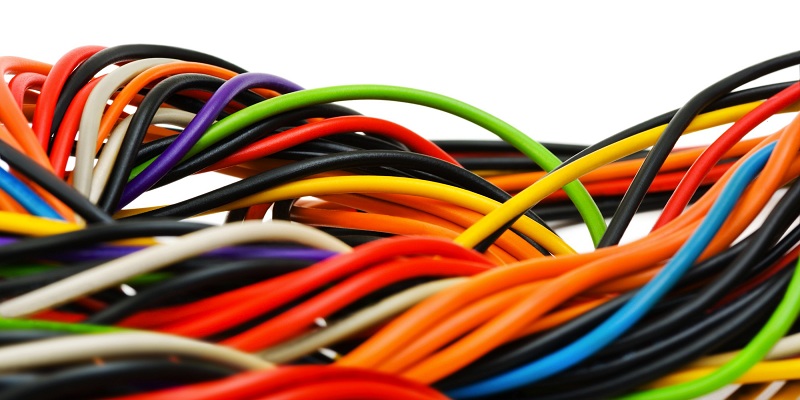The most important attribute of modern cables is its flexibility. Flexible cables are designed to cope with the physical stress associated with moving industrial applications. Therefore, they are used in auxiliary circuits and equipment, CCTV power supply, robotics, assembly lines, automation networking, microprocessor and computer interconnects and much more. They work even in extreme environmental conditions. Flexible cables are made of nickel-plated copper conductors, due to its highest electrical conductivity except for silver. They also come with customised sizing, custom cable, custom assembly and connector options. There are different kinds of flexible cables, all of which serve their definite purpose.
- PVC flexible cables
Polyvinyl Chloride or PVC is well-known for its insulation, bedding and sheathing properties due to its high resistance. PVC flexible cables are used in electric cables, power distribution, building cables, flexible cord, appliance wiring and machine tool wiring. They come in both armoured and unarmoured varieties and can withstand a temperature of 60 degree Celsius. The conductor used can be annealed copper, tinned copper and aluminum. They can be also used in household wiring as it is tough, durable and resistant to abrasion, fire, oils and chemicals, smoke emission, and water. They are easy to process and recycle when used as a thermoplastic.
- Optical fibre flexible cables
An Optical fibre flexible cable is a cable that contains one or more optical fibers that carry light. They are generally used in long-distance telecommunications, or providing high-speed data connection to different parts of a building. Immune to electromagnetic interference, they have extremely high bandwidth than metal cables. They can also detect early cable damage and offer low power loss which gives them high bandwidth and long transmission distance. Due to no leakage of electromagnetic energy, they promise secure transmissions. Fibre optic cables are highly flexible and are resistant to corrosive elements. They are much thinner and lighter than metal cables, and have a greater tensile strength as compared to copper cables.
- Copper flexible cables
Copper flexible cables are made from annealed copper conductors and long-lasting insulators. They may be left bare or plated to reduce oxidation by applying a thin layer of tin, silver or gold. These are commonly used in electrical wiring in buildings, communications wiring in data network for short to medium length, power distributions, appliance conductors, automotive conductors and magnet wires. Due to a thin conductive oxide film on the surface, it is easier to join copper cables. Copper flexible cables are formable, have a high strand count and are resistant to corrosion, flex tests and environment.
- Coaxial TV cables
Coaxial cables come with an inner conductor with an outer insulating layer, which is yet shielded by a conducting layer. The conductor might be copper or silver-plated steel with plastic or polyethylene insulator. The shield is made from copper wire, which gives it flexibility. Coaxial cables can be used in home video equipment, ham radio setups and measuring electronics. They also protect the television from electromagnetic interference and delivers a high-quality picture. They can carry data signals from antenna to receiver as in the case of digital converter boxes. Moreover, they are used in close-circuit television, Broadband Ethernet applications and undersea cable systems.
Therefore, there is a specific flexible cable manufacturers for each of your specifications. Though they come with their advantages and disadvantages, they are popular in the fields of industrial applications, electrical wiring, telecommunications, power distribution and machinery due to their many strengths. However, there is always the search for better equipment for our future needs.
